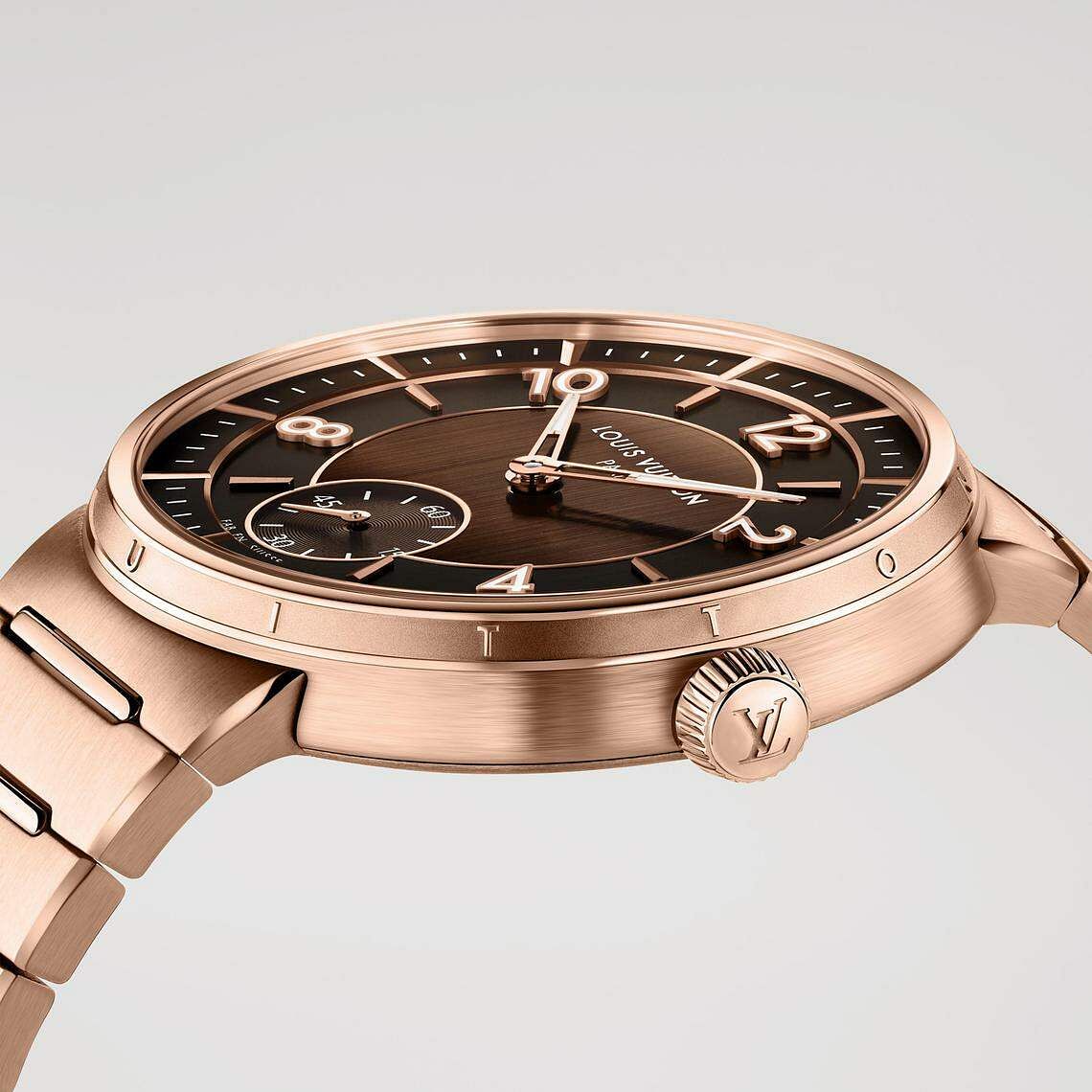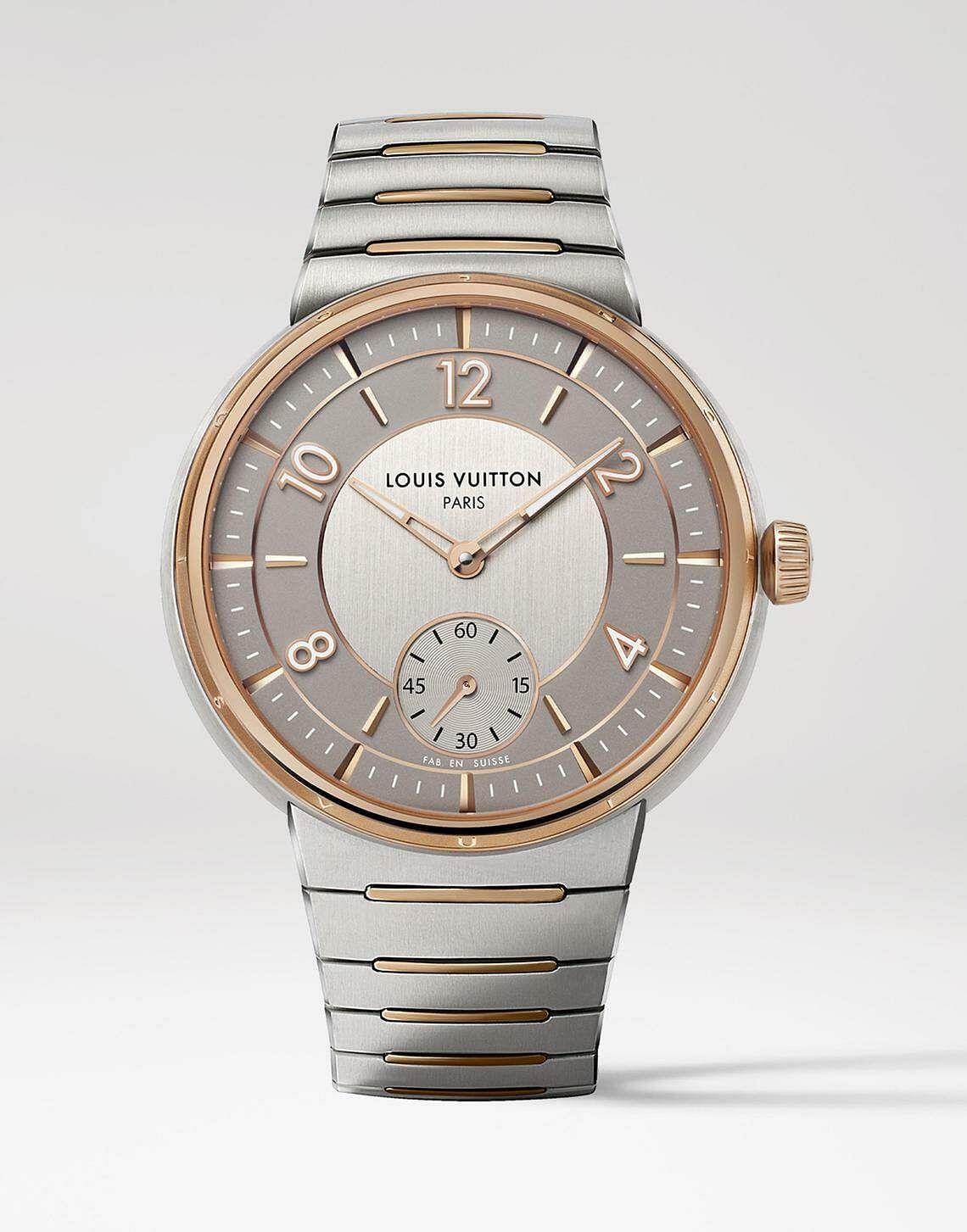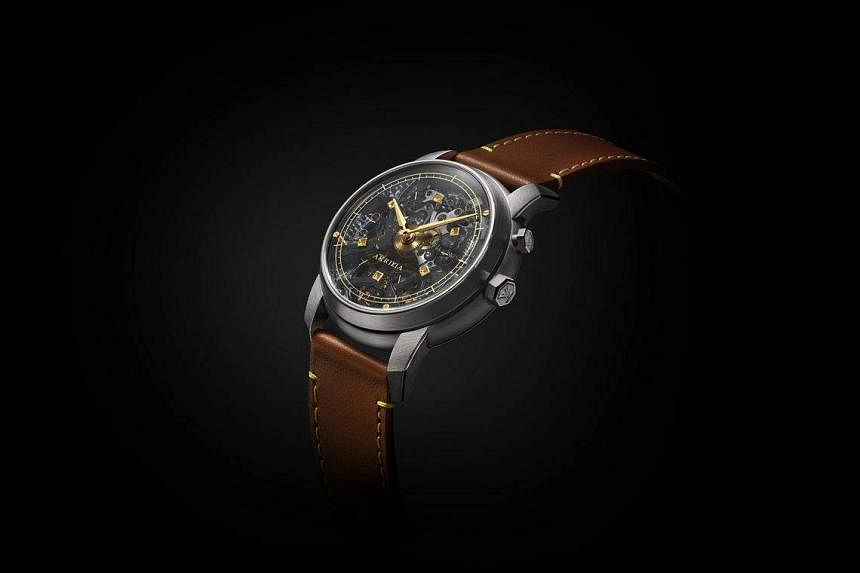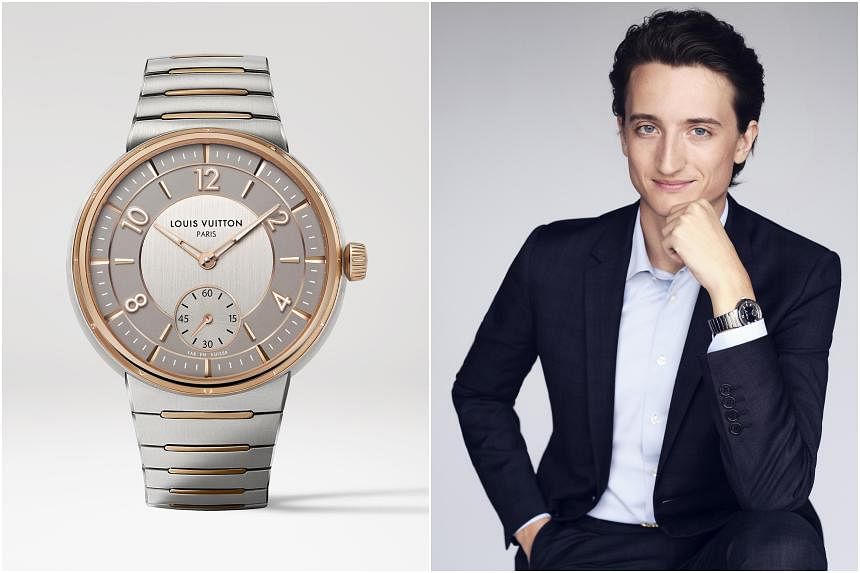SINGAPORE – There are privileges that come with being the son of Mr Bernard Arnault, chairman and founder of LVMH, the world’s biggest luxury goods company.
Mr Jean Arnault does not pretend otherwise. He is just 25, but his father has given him the big job of overhauling the watch division at French maison Louis Vuitton (LV).
“You know, I’m extremely fortunate to be in this position at my age. Nobody my age would be in this position in a regular way,” says the youngest of Mr Bernard Arnault’s five children on a recent visit to Singapore.
He does not take it for granted. In fact, the well-known watch geek takes his job seriously.
He has bold plans for the brand, chief among which is to cull 80 per cent of the existing product line-up – from more than 100 to 20 active references – and focus on horologically solid and pricey sports-luxe models.
Since coming on board two years ago, Mr Arnault has, among other things, set up a fund for young watchmakers and beavered away to reinvigorate Daniel Roth and Gerald Genta, two storied independent brands owned by LVMH.
Of late, he has been hogging headlines because of what he and La Fabrique du Temps – LV’s watchmaking arm – have done with the Tambour, one of the fashion house’s most iconic timepieces.
Inspired by the brand’s signature trunks and launched more than two decades ago, the Tambour has undergone a startling transformation to become a sleek, chic and lugless integrated bracelet sports watch.
In addition to the facelift, it also has a new micro-rotor, chronometer-certified calibre – the LFT023 – devised by La Fabrique du Temps’ famous founders Michel Navas and Enrico Barbasini.
The calibre is also LV’s first proprietary automatic three-hand movement designed with movement specialists Le Cercle des Horlogers.
LV has pulled out all the stops to launch the new Tambour because it is a foundational watch signifying a new direction and chapter in the company’s watch division.
“It’s a bit of a make-or-break moment, but we’re very lucky because we’re part of a big brand which (can afford) the investment and resources that could allow this sort of thing to happen. The traditional Swiss watch player would have been more cautious; it would have done (what we did) in 15 or 20 years,” says Mr Arnault, who has a master’s degree in mechanical engineering from Imperial College London and another in financial mathematics from the Massachusetts Institute of Technology.
The new Tambour – available in five references in steel, steel with rose gold, rose gold and yellow gold – has elicited raves from watch journalists and aficionados.

Asked how he feels about the positive response, Mr Arnault replies: “I can’t say today, after just 2½ months, if it’s been a true success. We’ll see 10 years down the road.”
He adds: “I’m the kind of guy who does not like to put the pen down, so it was very difficult to let the watch go into production after six to eight months of prototyping and testing.
“There are always things we can do better and we already have a plan to get these things done better.
“We will do discreet refinements in the movement, the case and the bracelet. It’s going to be a constant evolution.”
If there is one thing he is proudest of about the Tambour, it is that “everybody says it is a Louis Vuitton watch”.
“You know better than me that when you venture into the integrated steel sports watch club, it can very quickly look like something else, the creation of another brand. It can feel like you took inspiration from this or that.
“But we didn’t do that and it shows,” he says, adding that he and his team devoted a lot of attention to the watch’s ergonomics and proportions.

The case of the new watch is just 8.3mm thick, compared with the original’s 13.2mm.
The decision to streamline and reposition LV’s watchmaking strategy, he says, is a necessary move, one which has the full blessings of his father.
Before his arrival, the company’s offerings range from less than $10,000 for the Tambour Street Diver to more than $1 million for the Tambour Jacquemart Minute Repeater.
“A lot of work goes into the artisanal craftsmanship of our high-end pieces, but I immediately noticed our entry level is not quite at the same level. We had to harmonise everything and completely change our strategy at the entry level,” says Mr Arnault, who wants to turn LV into a boutique horology brand.
It explains why he poured so much energy into the new Tambour, the cheapest version of which costs $27,100.
Horological content is his No. 1 priority.
“It has to be amazing, whether it is a three-hand movement or jump hour retrograde. It has to have the horological content and the finishing. Everything needs to be perfect.”
One of the most gratifying aspects of his job is working with Mr Navas and Mr Barbasini, he says. The duo are two of the biggest names in watchmaking.
Mr Navas honed his craft at some of horology’s biggest labels, including Audemars Piguet, Patek Philippe and Franck Muller (where he helped develop the famous Crazy Hours complication), before starting La Fabrique du Temps with Mr Barbasini in 2007.
“Spending time almost every week with them to brainstorm about watches, hearing their stories as well as about things they’ve learnt and done in the past is super fulfilling because they’re super passionate,” he says.
It explains his excitement when he talks about reviving Daniel Roth and Gerald Genta with the two maestros.
“Daniel Roth is an easier animal than Genta because the brand is super clear. The design codes are there, and we are fortunate to have the resources at La Fabrique du Temps to, for the first time in history, actually build movements specifically for the brand,” he says.
Gerald Genta – founded by the late watch designer behind some of the world’s most iconic timepieces, including the Nautilus for Patek Philippe and Royal Oak for Audemars Piguet – is a completely different animal, he says.
“There are many different ways we can go in, but everybody will understand what I want for Genta by the middle of 2025,” he says conspiratorially.
“Back in the day, it was very much a brand focused on unique pieces and crazy designs, but (Genta) himself never settled on one shape. But it’s also a curse in a way because there was no focus around the brand whatsoever,” he says, adding that he wants to build a sense of unity for Gerald Genta while retaining its design presence.
He has more than enough to keep him occupied before 2025 rolls around.
Just last week, LV released the LVRR-01 Chronographe a Sonnerie, a collaboration with independent watchmaker Atelier Akrivia, the first in a series of collaborative ventures it is embarking on with renowned independent watchmakers.

The first dual-dial watch from LV, it is fitted with the LVRR-01 calibre, developed by Rexhep Rexhepi. The movement is inverted, with the chronograph and chiming mechanisms visible on the front instead of being on the back.
Personable and articulate, Mr Arnault grew up wanting to be a Formula One engineer.
“I didn’t want to go into watches, but as soon as I started reading about watchmaking in university, I became interested. I realised at the end of the day, watches are also mechanics and I’d be very happy in the industry,” he says.
Indeed, his passion for horology – especially independent watchmakers – is obvious especially when he talks about the Louis Vuitton Watch Prize for Independent Creatives, an initiative he came up with to “encourage those with bold visions who dare to challenge the now and defy the test of time”.
The prize sets out to foster creativity and innovation while honouring the art of watchmaking.
The winner gets 150,000 Swiss francs (S$226,375) in prize money and will also benefit from mentorship by La Fabrique du Temps.
“We’ve received more than 1,000 applications worldwide, which is unprecedented in the industry,” says Mr Arnault, adding that he was expecting only 100 applications at most.
“The LV Watch prize is a super important part of our whole ethos around watchmaking because (it allows) us to use (our) powerful, big brand name to shine the spotlight on that small part of the industry in the long term.
“Independent watchmakers make the whole industry shine because they’re focused on high-quality craftsmanship, reigniting old techniques used in the past, and never settling for something of inferior quality.
“If LV can contribute to make sure independent watchmaking continues over the long term, then the industry will benefit from it as well. It will pay dividends to that part of the industry and to everybody around it.”


